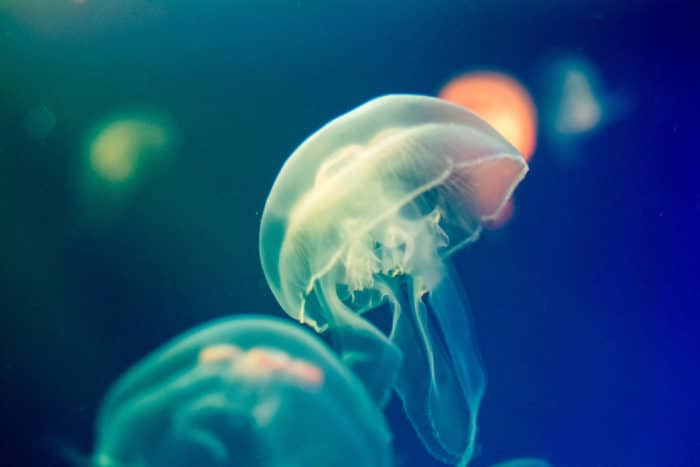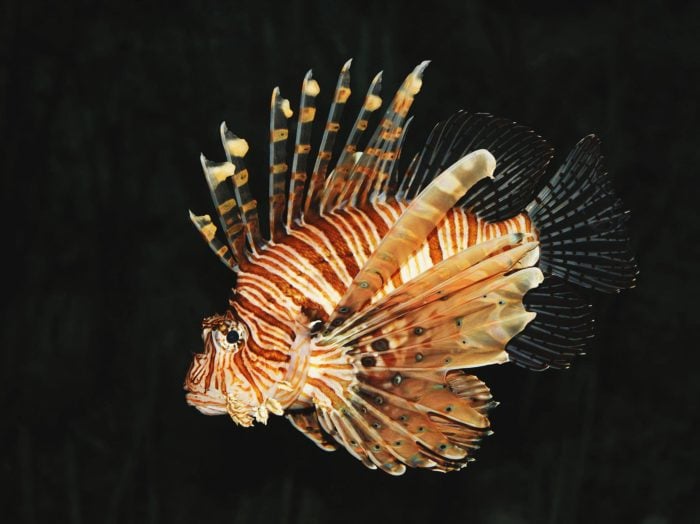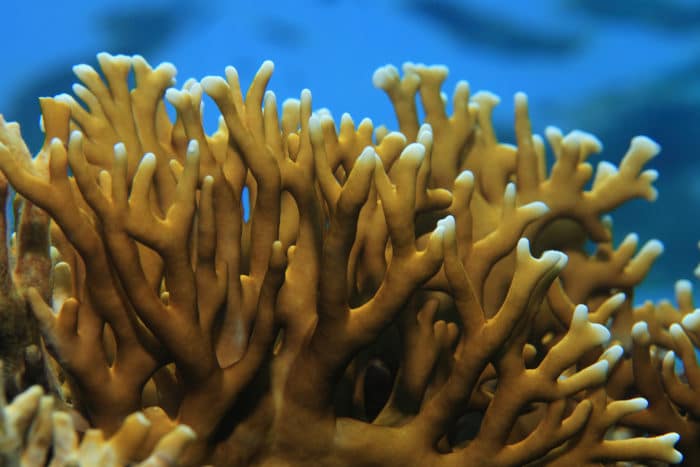A cardinal rule of any form of diving is “don’t touch”. We all know that keeping our hands to ourselves is the best way to avoid damaging the marine environment – and one of the best defenses against sustaining injuries underwater. However, in some instances, contact is unavoidable.
From coral grazes to jellyfish stings, most of us will have a painful encounter with a marine organism at some point. Knowing how to react is important. In this article, we look at the treatment for several common marine life injuries. In minor cases, the steps listed below may be all that’s required. In severe cases, they act as crucial first aid while waiting for professional help to arrive.
Jellyfish Stings

Jellyfish stings range from uncomfortable to life-threatening. The severity of a sting depends on several factors – including the species of the jellyfish, which part of the body is affected, how big the affected area is and the physiology of the victim. For example, small children or elderly people are more likely to experience aggravated symptoms, while some people may have an allergic reaction.
As with all marine life injuries, the first step is to remove the victim from the water. If the species is identified as a particularly dangerous one, the second step is to alert emergency services. Medical attention is also required if the victim experiences severe symptoms, including difficulty breathing. Avoid rubbing the affected area or applying direct pressure, as this can cause unfired stinging cells, or nematocysts, to release their poison.
Next, irrigate the affected area with household vinegar. This helps to neutralize the stinging cells and allows you to remove any visible tentacles without causing further damage. Make sure to use tweezers or gloves when removing the tentacles, just in case.
After removing the tentacles, rinse the area thoroughly with salt water to wash away any remaining nematocysts. Avoid using fresh water (or urine!), as both are thought to trigger stinging cells. Finally, apply heat to alleviate pain. Cold (e.g. an ice pack) also helps but isn’t as effective as heat. Stinging hydroid and anemone stings are treated in the same way.
Lionfish, Scorpionfish & Stonefish Envenomation

All three of these fish have venomous spines, which can cause serious injury if they penetrate a diver’s skin. Professional medical attention is required for lionfish and stonefish envenomation and may be necessary for scorpion fish envenomation as well, depending on the severity of the victim’s reaction. Anti-venom is sometimes used to treat stonefish injuries. First aid for all three marine life injuries is the same.
First, remove the victim from the water. Next, carefully remove any visible spine fragments from the wound using a pair of tweezers. When it is clean, soak the wound in hot water for between 30 and 90 minutes, or until medical help arrives (this must be as hot as the victim can tolerate, without scalding). The heat breaks down the proteins in the venom, causing it to deactivate. If the wound is difficult to submerge (i.e. if it is on the torso or head), hot cloths can be applied instead.
Sea Urchins

The treatment recommended for lionfish and stonefish also applies to marine life injuries caused by sea urchin spines. These spines are often very fragile, and great care must be taken not to break them when removing them from the skin. If a spine cannot be removed, or if it punctures near a joint, make sure to seek professional medical help. In the latter case, failure to treat the wound properly can eventually lead to a loss of joint function due to nerve damage.
Coral Abrasions

Coral cuts and abrasions have a lengthy healing time and become infected easily. This is because the living organisms that coat coral structures contaminate the wound, making the injury more severe than a regular graze sustained on land. The first step is to staunch the bleeding by applying direct pressure to the wound. When the bleeding has stopped, flush the area with clean, fresh water (not salt water).
This helps to remove coral fragments, ensuring that no organisms remain to cause further infection. Next, wash the wound with antibacterial soap, or hydrogen peroxide mixed with water. The wound should then be treated with antibiotic cream and sealed with a non-adhesive dressing. Make sure to change the dressing regularly, and to seek further medical attention if infection occurs.
Fire Coral Stings

Despite its name, fire coral is not a true coral. Instead, it is an anemone-like organism that inflicts a painful sting, which should be treated in the same way as a jellyfish sting. In severe cases, or in the event of an allergic reaction, emergency medical care may be required. Identifying fire coral stings can be difficult, especially as symptoms can take as long as 30 minutes to present themselves. Keep an eye out for a burning, stinging sensation accompanied by a raised red rash. You can treat the pain with an anesthetic cream and over-the-counter painkillers.
Animal Bites
Although it’s rare for marine life to attack without provocation, it does happen. The severity of a bite depends largely on the size of the animal that inflicted it – a triggerfish nip, for example, is clearly a lot easier to handle than a shark bite. However, the basic first aid for all bites (and in fact, for most bleeding wounds) is the same. First, remove the victim from the water, and then, if the bite is serious, call emergency services.
Next, apply direct pressure to the wound. If the bleeding continues, add more bandages on top of the injury rather than alleviating the pressure to remove the first one. If the wound is on a limb, try to hold it above heart level – this will reduce the blood flow to the affected area, thereby helping to minimize blood loss. Shock is a concern for major bites – be prepared to administer oxygen, especially if the victim is having trouble breathing.
If the wound is minor and doesn’t require stitches, wait until the bleeding has stopped and then rinse it with fresh water. Apply antiseptic, and seal the wound with a non-adhesive dressing. Make sure to keep an eye out for infection.

